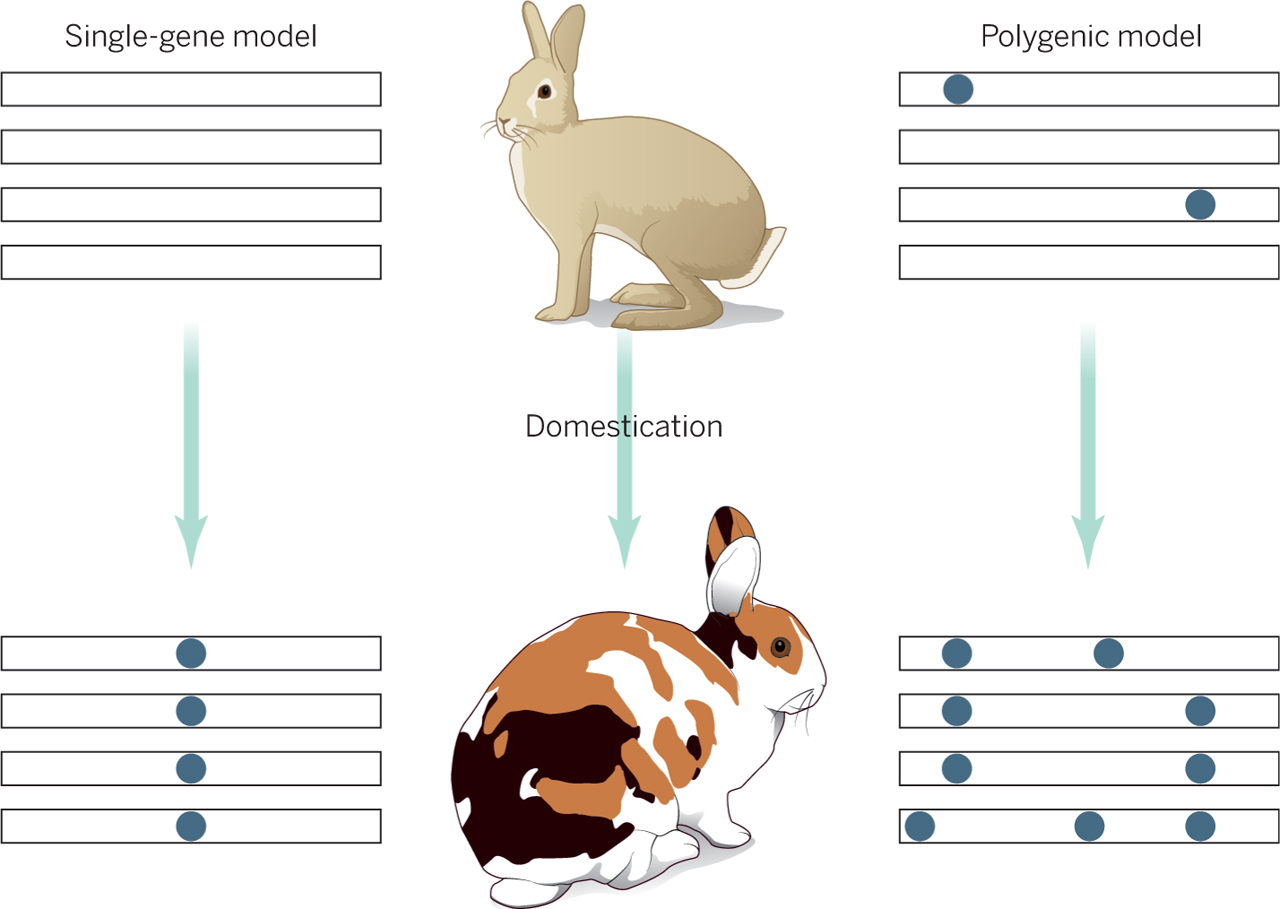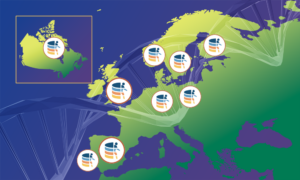
How do animals become domesticated?
Rabbits were domesticated only 1,400 years ago at monasteries in southern France. EMBL-EBI's Bronwen Aken talks about the latest research into the rabbit genome, which is available in the Ensembl genome browser.

By Bronwen Aken
The domestication of plants and animals many thousands of years ago revolutionised human societies and changed the course of history. Have you ever wondered how this domestication occurs? What changes happen at a genetic level to make one animal tamer than another?
Rabbits were domesticated only 1,400 years ago at monasteries in southern France. They’re an excellent model for studying domestication because we know when and where they were domesticated, and also because wild populations still exist in the region.
I’m a bioinformatician at the EMBL-European Bioinformatics Institute (EMBL-EBI), working as part of the Ensembl team. My team and I collaborated with researchers to understand what genetic changes took place when wild rabbits were domesticated. The results of the consortium’s research, published in Science, show that rabbit domestication occurred due to small changes in many genes, and not due to large changes in a few genes.
Results show that rabbit domestication occurred due to small changes in many genes, and not due to large changes in a few genes.
These small changes, known as genetic variants, have altered frequencies in domesticated rabbits when compared to wild populations. Many of these genes are involved in the development of the brain and nervous system, which may explain the behavioural changes that we see in domestic rabbits such as a weaker flight response.
In addition, we observed more genetic changes to the genome in regions that do not code for proteins. This finding is particularly interesting in light of projects such as the ENCyclopedia of DNA Elements (ENCODE), which have collected copious data illuminating how regions of the genome outside of protein-coding genes play a vital role in gene regulation. This non-coding genetic variation could therefore control which genes are switched on or off or act like a volume control to adjust the level to which a gene is switched on or expressed.
Comparing wild and domesticated rabbits
First, DNA from one domestic rabbit was sequenced to build a high-quality reference genome assembly. Having a reference genome assembly is a critical first step in any genome analysis because it provides a basis against which other genetic data can be compared.
Next, the genomes of other rabbits were sequenced: six domestic breeds, and wild rabbits from 14 different places too. This provided a fantastic opportunity for comparing the genetic changes that occurred when wild rabbits were domesticated because genetic changes that are more or less frequently observed in the domesticated breeds compared to wild populations are more likely to contribute to domestication.
Ensembl’s role
In addition to having a reference genome assembly, researchers also need a well-characterised gene set. This was the part of the project that I was involved with. I co-managed the Ensembl gene annotation project for the rabbit.
Magali Ruffier in the Ensembl Genebuild team predicted the location of protein-coding genes for the rabbit by mapping known protein sequences from rabbit other animals to the rabbit genome. This is a computationally expensive job and can take several months to complete. Daniel Barrell also mapped the consortium’s gene expression (transcriptome) data from ten tissues to the rabbit genome and incorporated these data into the gene annotation project.
Future directions
The genomic resources collected during this research provide a good basis for further study, including research into the early stages of species formation. Contrary to what you might expect, we did not find evidence to support the idea that domestication is driven by the inactivation of a small number of genes. Instead, the small changes (variations) that we observed in many genes were already present in the wild populations and have merely had their frequency altered in domestic populations. This means that rabbits may also be a good model for studying what happens when domestic and wild populations breed.


